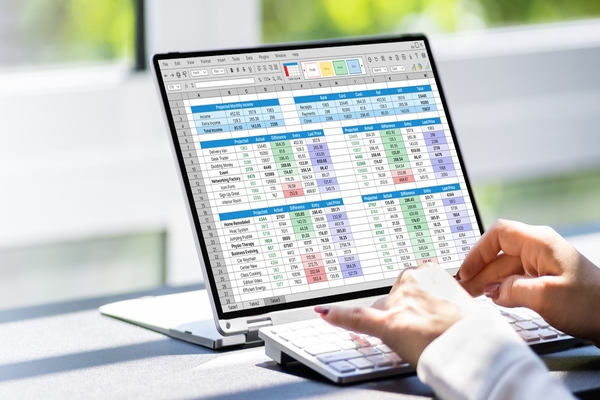Choosing the right DXP to optimise your digital experiences

Phil Dunlop at Progress explains the importance of choosing the right Digital Experience Platform (DXP)
With all the lessons brands have learned during the pandemic, as digital leaders plan for 2022, digital experience couldn’t be higher up the agenda. Organisations need to take advantage of the right tools and technology to engage with customers the way they want to be interacted with. This means investing in the right blend of human expertise and technology innovation for the optimal customer experience.
Digital transformation offers organisations of every size and industry a chance to evolve to meet the needs of modern business - delivering efficiency, cost-savings, and the opportunity to enhance customer relations. Whatever point an organisation has reached on its journey to reach digital maturity, even marginal gains can have a big impact on the bottom line.
It’s hard for organisations to keep up with rapidly changing consumer behaviours and technology trends. Just when we thought that offering automated technology to consumers was the best way forward, consumers are now coming round to needing more of a human touch.
For instance, interests are growing in making ethical purchases and customised support can help to finalise a purchase. But regardless of how much a percentage of human interaction takes place in each informational transaction, there is one tool which is vital to enable successful digital transformation: a digital experience platform (DXP).
A DXP is a platform-based set of technologies which provides users with consistent, secure, and personalised content across multiple digital touchpoints. The DXP performs a lynchpin role in the infrastructure, linking an organisation’s IT, business and marketing functions to create significant business advantage.
Gartner’s description of a DXP is “a well-integrated and cohesive set of technologies designed to enable the composition, management, delivery and optimisation of contextualised digital experiences across multi-experience customer journeys.”
A DXP can provide optimal digital experiences to multiple stakeholders and helps ensure continuity across the full customer lifetime journey. The trend in adoption of DXPs is rapid and global, with the global market anticipated to register a CAGR of 12.07% over the forecast period 2021 to 2026.
Progress’ recent research ’Mid-Market Leaders Need a Cost-Effective, Efficient, and User-Friendly DXP Solution’ shows that 35% of organisations haven’t implemented a DXP solution because the products available on the market are too complex, expensive and include features that won’t get used. With a broad range of vendors and capabilities, it’s a difficult decision to choose the best one for your business.
An investment in a DXP platform must be based on a long-term vision. Choose a vendor which offers a DXP that supports your unique business needs, rather than trying to fit the mould of a one-stop shop solution. Here are some key features and capabilities for consideration when choosing your DXP:
- The ease-of-use of a DXP is vital to collaborative working across functions, in order to produce more impactful digital campaigns and programmes, faster and on a larger scale. This takes pressure off the IT team to handle marketing requests
- Make a move to the cloud, if you haven’t already, as your digital experience operations will have more agility and flexibility and have the scalability to accommodate
- A composable DXP which offers flexibility and scalability is highly recommended. You need the ability to customise and scale your DXP and integrate third party tools as necessary to meet changes in business strategies, to avoid outgrowing a platform
- Analytics, optimisation, and personalisation are also important as customers today expect individualised experiences, consistent across all the channels they use. A DXP which has these features will give full visibility of all the segments, prospects, and touchpoints you need to target visitors with impactful content
- It may sound obvious, but multi-language support is also important as true personalisation offers users all the platform’s features in their preferred language
- Finally, security is not optional. As your DXP will interact with a huge variety of connections, including critical systems, it goes without saying that it must offer the most robust levels of cybersecurity and compliance to minimise risk
There are some ways to get it wrong when choosing / installing a DXP. Try to avoid vendors that insist on their own suite of products, with no ability to integrate your preferred third-party tools. One-stop-shop platforms may look like a hassle-free solution but may not allow the customisation options you need, leading to more difficult and expensive maintenance longer term.
The digital transformation journey for most companies is a phased roll-out, so ideally look for a DXP that can scale with your digital strategy. In particular a DXP that will allow you to add capabilities required for each stage of your digital maturity.
Many organisations rely on the DXP vendor’s own support to create remarkable digital experiences. Make sure your DXP vendor has the strategic expertise and project management skills necessary to bring your vision to life and deliver the business value you expect.
Choosing the ideal DXP comes down to weighing up the short and long-term benefits, against the cost of ownership, not forgetting the costs of training employees to use it. Ease of use, ease of implementation and flexibility, hybrid content management and cloud support, should be considered key DXP features to enable the delivery of outstanding digital experiences.
Phil Dunlop is General Manager EMEA at Progress
Main image courtesy of iStockPhoto.com

Business Reporter Team
Most Viewed
Winston House, 3rd Floor, Units 306-309, 2-4 Dollis Park, London, N3 1HF
23-29 Hendon Lane, London, N3 1RT
020 8349 4363
© 2025, Lyonsdown Limited. Business Reporter® is a registered trademark of Lyonsdown Ltd. VAT registration number: 830519543





